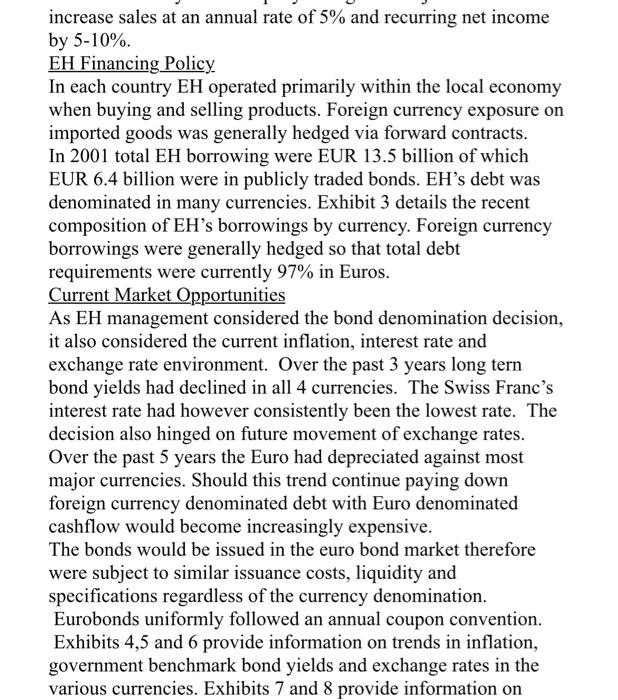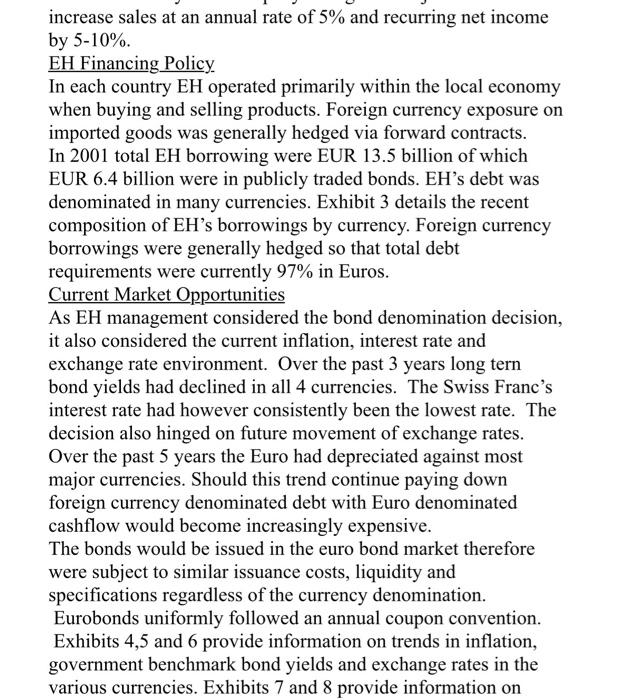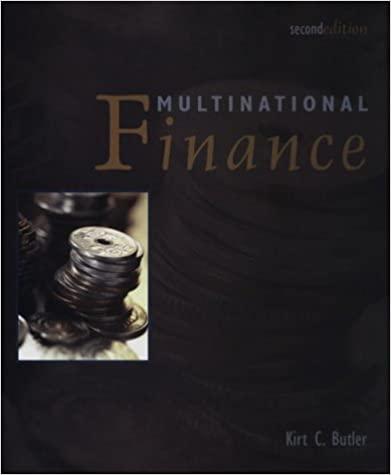increase sales at an annual rate of 5% and recurring net income by 5-10%. EH Financing Policy In each country EH operated primarily within the local economy when buying and selling products. Foreign currency exposure on imported goods was generally hedged via forward contracts. In 2001 total EH borrowing were EUR 13.5 billion of which EUR 6.4 billion were in publicly traded bonds. EH's debt was denominated in many currencies. Exhibit 3 details the recent composition of EH's borrowings by currency. Foreign currency borrowings were generally hedged so that total debt requirements were currently 97% in Euros. Current Market Opportunities As EH management considered the bond denomination decision, it also considered the current inflation, interest rate and exchange rate environment. Over the past 3 years long tern bond yields had declined in all 4 currencies. The Swiss Franc's interest rate had however consistently been the lowest rate. The decision also hinged on future movement of exchange rates. Over the past 5 years the Euro had depreciated against most major currencies. Should this trend continue paying down foreign currency denominated debt with Euro denominated cashflow would become increasingly expensive. The bonds would be issued in the euro bond market therefore were subject to similar issuance costs, liquidity and specifications regardless of the currency denomination. Eurobonds uniformly followed an annual coupon convention. Exhibits 4,5 and 6 provide information on trends in inflation, government benchmark bond yields and exchange rates in the various currencies. Exhibits 7 and 8 provide information on increase sales at an annual rate of 5% and recurring net income by 5-10%. EH Financing Policy In each country EH operated primarily within the local economy when buying and selling products. Foreign currency exposure on imported goods was generally hedged via forward contracts. In 2001 total EH borrowing were EUR 13.5 billion of which EUR 6.4 billion were in publicly traded bonds. EH's debt was denominated in many currencies. Exhibit 3 details the recent composition of EH's borrowings by currency. Foreign currency borrowings were generally hedged so that total debt requirements were currently 97% in Euros. Current Market Opportunities As EH management considered the bond denomination decision, it also considered the current inflation, interest rate and exchange rate environment. Over the past 3 years long tern bond yields had declined in all 4 currencies. The Swiss Franc's interest rate had however consistently been the lowest rate. The decision also hinged on future movement of exchange rates. Over the past 5 years the Euro had depreciated against most major currencies. Should this trend continue paying down foreign currency denominated debt with Euro denominated cashflow would become increasingly expensive. The bonds would be issued in the euro bond market therefore were subject to similar issuance costs, liquidity and specifications regardless of the currency denomination. Eurobonds uniformly followed an annual coupon convention. Exhibits 4,5 and 6 provide information on trends in inflation, government benchmark bond yields and exchange rates in the various currencies. Exhibits 7 and 8 provide information on Please answer the following question: Which bond would you advise EH's management to issue and why? Please provide all analysis that supports your recommendation, Please read the attached case and answer the single question at the end. You are limited to one half of one page of text for your answer plus any calculations (excel based would be preferred) that you may use to support your answer. You may attach any such calculations separately in your email









